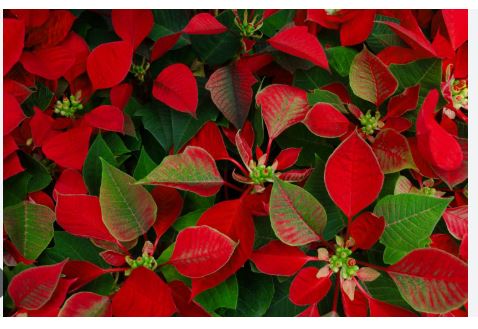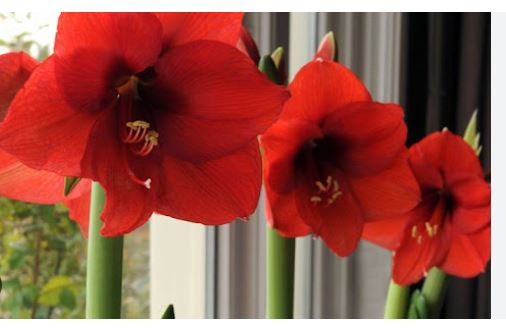
December’s icy breath and fleeting daylight don’t silence every bloom—some flowers rise to meet the challenge. These winter warriors splash color across muted landscapes, from soft whites to vivid reds, defying frost and snow. They transform the stark season into a quiet celebration of life.
Rooted in diverse corners—alpine slopes, temperate woodlands, or warm coasts—these plants are built for the cold’s embrace. Some sprout from bulbs, others cling to evergreen frames, timed to glow when the world dims. Their resilience turns barren spaces into pockets of wonder.
Beyond their beauty, these blooms are lifelines, offering nectar or seeds to the few creatures stirring in winter’s chill. Pollinators brave the cold for a sip, while birds peck at lingering fruits. They weave a fragile but essential thread into the season’s sparse tapestry.
Gardeners prize them for their grit and grace, planting them in pots, beds, or wild drifts. Some whisper faint scents—sweet or sharp—while others stun with form alone. Together, they prove December isn’t just winter’s start, but a stage for nature’s quiet defiance.

Flowers That Bloom In December
Winter Jasmine (Jasminum nudiflorum)
This Chinese native brightens December with small, yellow, star-shaped flowers dotting bare, arching stems. It thrives in sun or shade, cascading over walls or sprawling as groundcover, unfazed by light frost. Scentless but cheerful, it’s a beacon of hope in the bleak midwinter, blooming before leaves emerge.
Hellebores (Helleborus niger)
Known as the Christmas rose, this European perennial blooms in December with waxy, white or pink-tinged flowers that nod atop evergreen foliage. It loves shady, moist soil and shrugs off snow, its subtle beauty, often lasting into January. Early pollinators brave the cold for its nectar, making it a winter garden star.
Camellias (Camellia japonica)
In milder climates, these East Asian shrubs unfurl lush, rose-like blooms in red, pink, or white through December. Their glossy, evergreen leaves frame the flowers, which thrive in acidic soil and partial shade. The slow-opening petals resist frost, offering elegance when little else dares to bloom.
Cyclamen (Cyclamen persicum)
Popular as houseplants, cyclamen bloom indoors in December with upswept petals in pink, red, or white, hovering over silver-marbled leaves. Native to the Mediterranean, they prefer cool, indirect light, adding delicate charm to winter windowsills. Outdoors in mild zones, they brave the chill with equal grace.
Witch Hazel (Hamamelis x intermedia)
This hybrid blooms in December with spidery, yellow or orange flowers that twist along bare branches, releasing a citrusy scent. A cross of Asian species, it thrives in sun or shade with moist soil. Its late bloom supports rare pollinators and adds a wild, wiry beauty to frozen gardens.
Paperbush (Edgeworthia chrysantha)
From China, this shrub opens fragrant, yellow flower clusters in December, dangling from leafless stems. It prefers sun or part shade and rich soil, its papery bark peeling in curls. The spicy scent wafts through cold air, a subtle promise of spring amid winter’s grip.
Winter Heath (Erica carnea)
Carpeting the ground with tiny, bell-shaped flowers in pink, red, or white, this Alpine native blooms through December. It loves acidic, sunny soil and laughs at snow, its needle-like foliage evergreen. The blooms feed early bees, bringing life to otherwise dormant landscapes.
Sasanqua Camellia (Camellia sasanqua)
Blooming earlier than its cousin, this Japanese shrub offers fragrant, pink, red, or white flowers into December. It prefers sun and well-drained soil, its petals scattering like snowflakes. Lighter and airier than other camellias, it’s a delicate standout in mild winter regions.
Mahonia (Mahonia x media)
This evergreen hybrid bursts with sprays of yellow flowers in December, smelling faintly of honey. A cross of Asian species, it thrives in shade and moist soil, its spiky leaves paired with blue berries. The blooms draw winter insects, blending cheer with rugged charm.
Snowdrops (Galanthus nival)(Galanthus nival “ivalis”)
In milder climates or late December, these European bulbs push up small, white, bell-shaped flowers that dangle like tiny lanterns. They love shady, damp soil and pierce through frost or snow. Their quiet elegance signals winter’s midpoint, a whisper of renewal in the cold.
Daphne (Daphne odora)
This Asian shrub blooms in December with clusters of pink or white flowers, their sweet fragrance cutting through icy air. It prefers partial shade and well-drained soil, staying evergreen. Toxic but stunning, it’s a rare treat for late pollinators and winter admirers alike.
Winter Aconite (Eranthis hyemalis)
Brightening December’s end, this European tuber blooms with cupped, yellow flowers ringed by green collars. It thrives in shade and moist soil, often carpeting woodlands. Frost-proof and bee-friendly, its sunny hue defies the gloom, a bold dot in the winter palette.
Pansies (Viola x wittrockiana)
These cool-weather lovers bloom into December with cheerful, face-like petals in purple, yellow, blue, or mixed hues. European hybrids, they thrive in sun or part shade, shrugging off light frost. Their velvety texture and edible blooms add whimsy to pots or borders, brightening winter’s edge.
Viburnum (Viburnum x bodnantense)
This hybrid shrub offers clusters of pinkish-white flowers in December, their sweet fragrance drifting through cold air. A cross of Asian species, it grows in sun or shade with moist soil, its bare branches showcasing the blooms. Late insects visit, and its early flowering hints at spring’s promise.
Skimmia (Skimmia japonica)
Blooming in December with tight, pink or white flower clusters, this Japanese evergreen exudes a faint, sweet scent. It loves shade and acidic soil, pairing its glossy leaves with red berries in some varieties. The blooms draw early pollinators, adding subtle charm to winter shadows.
Stock (Matthiola incana)
In mild climates, stock extends into December with spiky blooms in pink, white, or purple, smelling of cloves. Mediterranean by origin, it prefers cool weather and full sun, its soft leaves framing the flowers. A cut-flower gem, it brings warmth and fragrance indoors as frost looms.
Kaffir Lily (Schizostylis coccinea)
This South African beauty blooms in December with scarlet or pink, star-shaped flowers on slender stems. It thrives in sunny, moist spots, its grass-like foliage forming clumps. The vivid blooms pierce winter’s dullness, offering nectar to brave insects in milder zones.
Wintersweet (Chimonanthus praecox)
Native to China, this shrub blooms in December with waxy, yellow flowers that hang from bare branches, releasing a potent, spicy scent. It loves sun and well-drained soil, its understated petals glowing against the cold. The fragrance carries far, a hidden treasure in winter gardens.
Heather (Calluna vulgaris)
Late-blooming varieties of this European moorland plant dot December with tiny, pink or white bells. It thrives in acidic, sunny soil, its evergreen foliage tough against frost. The blooms sustain early bees, while its low, rugged spread adds texture to barren ground.
Nerine (Nerine sarniensis)
Known as Guernsey lilies, these South African bulbs bloom in December with clusters of pink or red, lily-like flowers. They prefer sun and well-drained soil, their bare stems rising before leaves. The delicate petals withstand cool nights, a fleeting burst of summer in winter.
Fatsia (Fatsia japonica)
This Japanese shrub produces creamy-white, globe-like flower clusters in December, atop bold, glossy leaves. It thrives in shade and moist soil, tolerating frost and wind. The blooms attract late insects, while its tropical look defies the season’s starkness.
Clematis (Clematis cirrhosa)
In mild regions, this Mediterranean vine blooms in December with small, creamy bells speckled with red inside. It climbs in sun or part shade, evergreen leaves framing the flowers. Its subtle elegance and faint scent brighten walls or trellises against winter’s gloom.
Calendula (Calendula officinalis)
In frost-free zones, these Mediterranean annuals bloom into December with orange or yellow daisy-like flowers. They self-seed in sunny, average soil, their edible petals adding a peppery kick. The blooms close at night, a resilient glow in the fading year.
Holly (Ilex aquifolium)
While known for berries, some hollies bloom in December with tiny, white flowers on evergreen branches. Native to Europe, they grow in sun or shade, their prickly leaves a backdrop. The blooms feed early insects, pairing with red fruit for a festive, functional display.
Alyssum (Lobularia maritima)
In mild climates, this low-grower blooms into December with tiny white, pink, or purple flowers, releasing a honey-like scent. Mediterranean by origin, it thrives in sun and tolerates light frost, spreading like a carpet. Late pollinators visit, and its delicate clusters soften winter’s harsh edges.
Rose (Rosa spp.)
Hardy varieties, like some rugosas, push blooms into December in frost-free zones, with reds, pinks, or whites. Globally cultivated, they need sun and good airflow to defy the cold. Their faint scent lingers, and petals feed brave bees, extending summer’s grace into winter.
Winter Daphne (Daphne mezereum)
This European shrub blooms in December with small, purple-pink flowers along bare stems, their sweet fragrance cutting through icy air. It prefers sun or part shade and well-drained soil, staying deciduous. Toxic but striking, it’s a rare treat for early insects.
Gentian (Gentiana acaulis)
In milder regions, this alpine native blooms in December with trumpet-shaped, electric-blue flowers. It loves sun and moist, acidic soil, hugging the ground with evergreen leaves. The vivid hue draws late pollinators, standing out like a jewel against snow or frost.
Lantana (Lantana camara)
In warm climates, this tropical American plant blooms into December with shifting flower heads—yellow to orange, pink to red. It thrives in sun and lean soil, feeding hummingbirds and butterflies. The rough, scented leaves pair with vivid blooms, defying winter’s onset.
Sedum (Hylotelephium spectabile)
Late-blooming sedums stretch into December in mild areas, their star-shaped flowers fading from pink to bronze. Native to various regions, they love sun and rocky soil, their succulent leaves frost-tolerant. The dried heads feed birds, adding texture to bare gardens.
Snapdragons (Antirrhinum majus)
In frost-free zones, snapdragons bloom in December with tubular flowers in pink, yellow, or white, snapping shut when squeezed. Mediterranean in origin, they prefer cool weather and sun, their spikes rising cheerfully. A subtle sweetness wafts, brightening the gloom.
Paperwhite (Narcissus papyraceus)
Popular indoors, these Mediterranean bulbs bloom in December with clusters of small, white, star-like flowers, exuding a strong, sweet scent. They thrive in warm, bright spots, forced from bulbs. Their delicate beauty contrasts with winter’s weight, a favorite for holiday displays.
Chrysanthemums (Chrysanthemum spp.)
The hardiest mums bloom into December, their pom-poms or daisy-like flowers in reds, yellows, or purples holding firm. East Asian natives, they love sun and well-drained soil, their spicy scent lingering. They bridge fall into winter, tough and vibrant.
Caryopteris (Caryopteris divaricata)
Late varieties of this Asian shrub bloom in December in mild climates with soft blue flower whorls along woody stems. It thrives in sun and dry soil, its aromatic leaves deterring pests. Bees visit the blooms, and the cool tones soften winter’s starkness.
Primrose (Primula vulgaris)
In temperate regions, some primroses bloom in December with pale yellow or white flowers nestled in rosettes of crinkled leaves. European natives, they love shade and moist soil, defying frost. Their quiet charm feeds early pollinators, a subtle nod to spring.
Hollyhock (Alcea rosea)
In warm zones, late-blooming hollyhocks tower into December with single or double flowers in pink, white, or red along tall spikes. Mediterranean in origin, they need sun and lean soil, their blooms fading with frost. They add height and nostalgia to winter gardens.